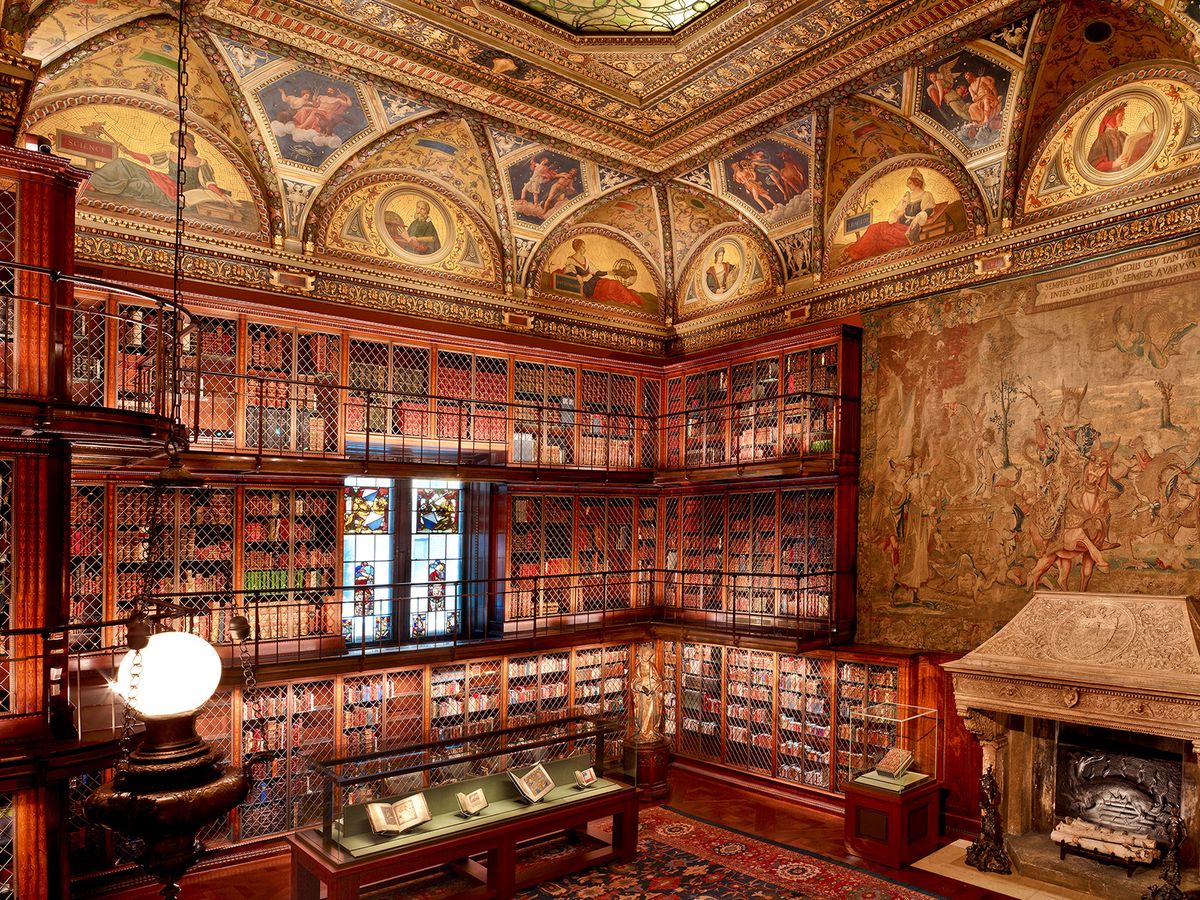:focal(800x602:801x603)/https://tf-cmsv2-smithsonianmag-media.s3.amazonaws.com/filer_public/71/01/71011756-8933-4e46-adac-445dfebe2be6/nov2024_i14_prologue.jpg)
With its exquisitely vaulted ceiling and inlaid walnut bookshelves covering three floors, the East Room was designed as a treasury and showroom for Morgan’s rare book collection.
The Morgan Library & Museum
Toward the end of the 19th century, J. Pierpont Morganâthe Gilded Ageâs wolf of Wall Streetâused some of his wealth to amass a vast collection of books and art. He soon realized it needed a home, and a skilled caretaker. In 1905, Morganâs bibliophilic nephew recommended one of his co-workers in the library at Princeton: Belle da Costa Greene. Summoned to an audience with the financier, she impressed Morgan and soon moved into an office in the newly constructed building known as âMr. Morganâs Libraryâ in Midtown Manhattan. She would remain at its helm for nearly the rest of her life, and after Morganâs death in 1913, she led the effort to make his vast private collection accessible to all. Now, with the Morgan Library celebrating its centenary as a public institution, Greene is honored in a special exhibition. As co-curator Erica Ciallela says, âThereâs no real way to talk about the history of the Morgan Library without talking about Belle da Costa Greene.â
Belle da Costa Greene, seen in 1911, laid the groundwork for the opening of the Morgan Library & Museum in 1924, where she served as the first director. The Morgan Library & Museum/https://tf-cmsv2-smithsonianmag-media.s3.amazonaws.com/filer_public/2e/2d/2e2d8572-e040-4cfa-b654-7b76f32ab27e/untitled-1.jpg)
Born Belle Marion Greener in 1879, to an elite Black family in Washington, D.C., Greene was raised by a single mother who eventually moved the children to New York City, shortening their last name. To improve her childrenâs prospects, Greeneâs mother decided they would âpassâ as white; Greeneâs true race would remain a family secret until nearly 50 years after her death. Having honed her librarian skills in summer school at Amherst College, and at Princeton, the self-christened Belle da Costa Greene was brilliant as Morganâs personal librarian, cataloging his collection, guiding acquisitions and helping scholars sift through the libraryâs holdings. When Morgan died, his son, Jack, inherited most of the collectionâon the condition that he make it publicly available. In 1924, the Pierpont Morgan Library opened its doors, with Greene as its inaugural director.
During a restoration in 2010, the North Room was converted into a gallery designed to show a wide selection of Morgan’s collection of antiquities from Western Asia, Greece and Rome—as well as the Thaw Collection of early medieval objects of personal adornment. The Morgan Library & Museum/https://tf-cmsv2-smithsonianmag-media.s3.amazonaws.com/filer_public/b1/09/b1096786-850a-4465-8ee3-050e9b95d131/nov2024_i15_prologue.jpg)
âShe was pioneering in the way she went about librarianship,â Ciallela adds, noting that Greene was building a prominent career at a time when women lacked basic civil rights. âSheâs one of the highest-paid women in the country in the 1920s. So to have that kind of clout and be able to say, âWhat Iâm going to do with that is advance access to research,â is incredible.âÂ


